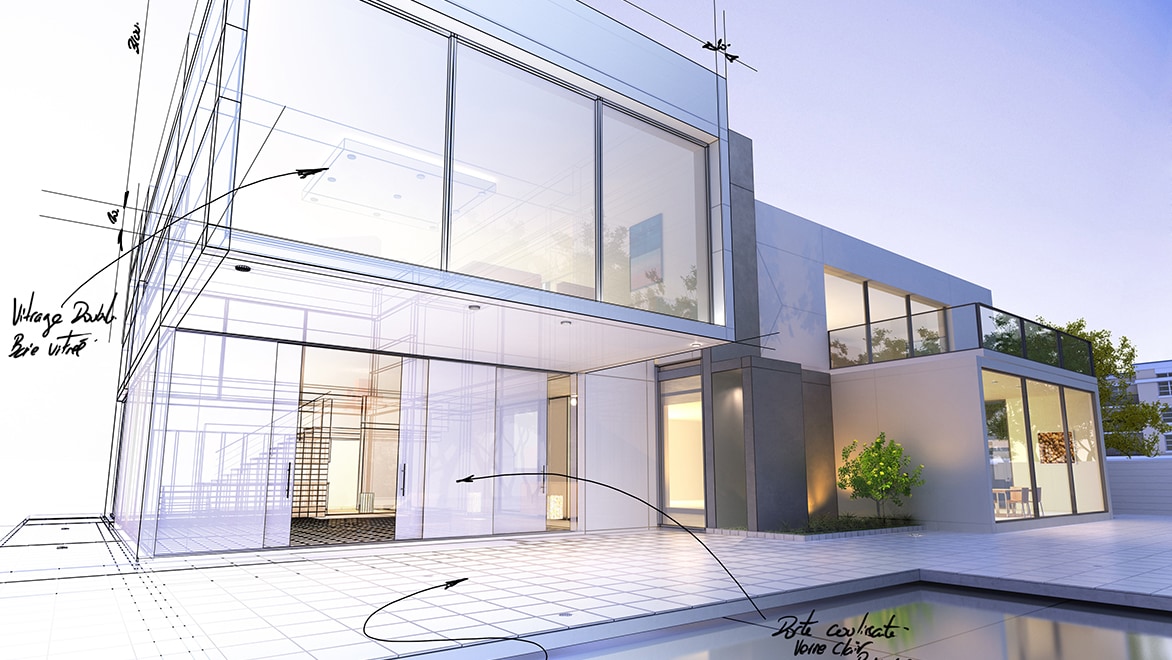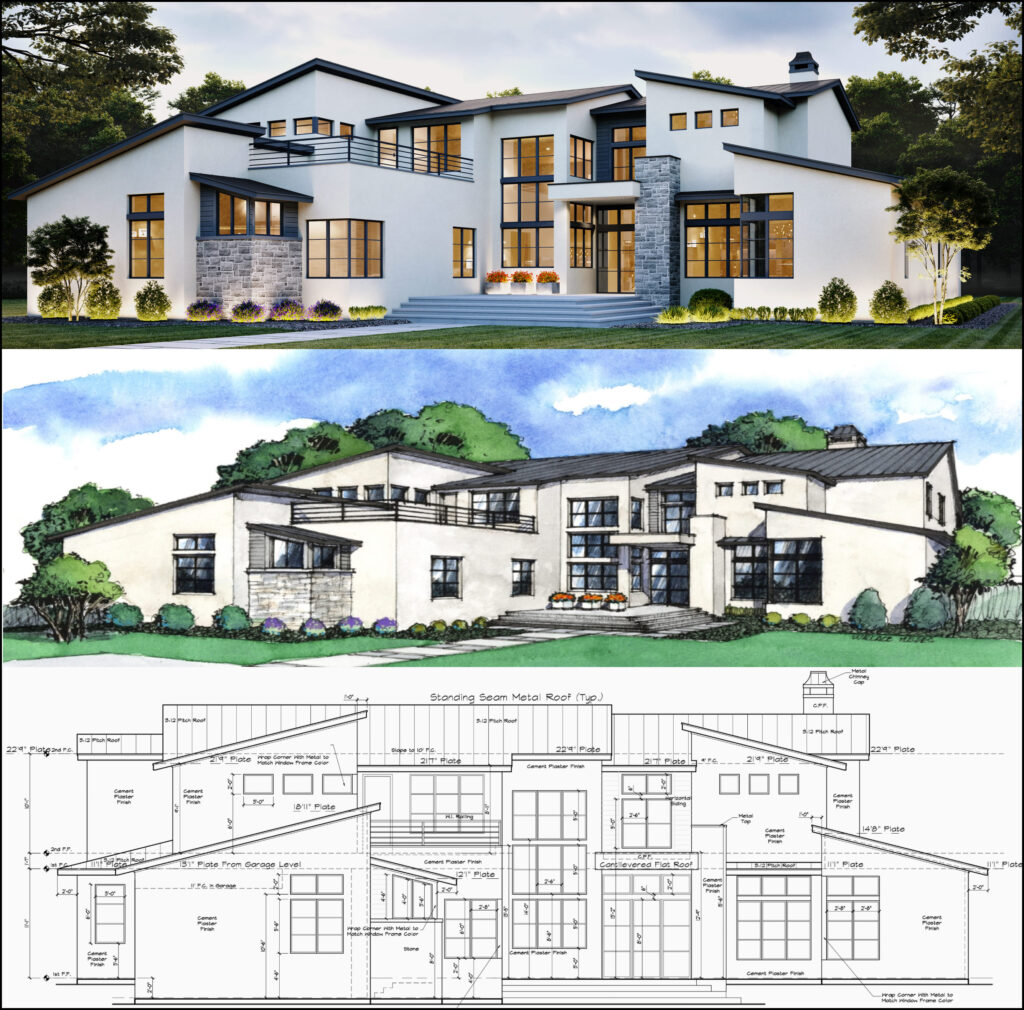Raise Your Structure Style with the Expertise of CDA Architects
Raise Your Structure Style with the Expertise of CDA Architects
Blog Article
Recognizing the Collaborative Process In Between Architects and Designers in Modern Building And Construction Projects
The collaborative procedure in between architects and designers is necessary in modern building tasks, as it harmonizes design intent with engineering feasibility. This partnership not just affects the visual and useful aspects of a job yet additionally plays a vital duty in dealing with sustainability challenges. By using effective communication techniques and leveraging advanced innovations, such as Structure Info Modeling (BIM), groups can function a lot more cohesively. The intricacies of this collaboration typically existing special challenges that can hinder progression. Checking out these characteristics discloses understandings that could dramatically impact task outcomes and overall market criteria. cda architects.
The Importance of Cooperation
The collaborative synergy between engineers and engineers is crucial for the successful realization of any construction job. This partnership combines unique proficiency and viewpoints, allowing the integration of ingenious layout with sensible design services. By functioning with each other, architects and engineers can guarantee that a project not just fulfills aesthetic and practical requirements yet additionally sticks to safety and security, sustainability, and monetary constraints.
Cooperation cultivates a shared vision, facilitating the positioning of goals and expectations from the outset. This placement is critical in resolving potential challenges and mitigating dangers that might emerge throughout the job lifecycle. Furthermore, a collective approach enables the effective allowance of sources, optimizing both time and cost.
The importance of partnership encompasses the repetitive procedure of layout and construction, where comments from engineers can notify building choices, causing even more practical and sustainable designs. Conversely, engineers can motivate designers to think creatively regarding how to attain architectural integrity without jeopardizing artistic intent. Inevitably, the collaborative partnership between engineers and designers is not just helpful; it is fundamental to the creation of high-grade, functional, and innovative developed atmospheres that satisfy the needs of culture.
Interaction Methods and Devices
Efficient communication strategies and devices are crucial for cultivating collaboration in between engineers and engineers throughout the job lifecycle. Developing clear channels of communication is necessary to guarantee that all staff member are aligned with job purposes, timelines, and duties. Regular conferences, both in-person and virtual, provide chances for stakeholders to go over progress, address worries, and make informed decisions.

Additionally, taking on joint interaction devices, such as Slack or Microsoft Teams, permits instant messaging, file sharing, and continuous conversations, advertising an extra agile reaction to emerging problems. Record monitoring systems likewise play an essential role in organizing job paperwork, making sure that all team participants have accessibility to the current info.
Shared Objectives and Project Vision
A combined job vision acts as the foundation for successful cooperation between engineers and engineers (cda architects). This common vision not only aligns the initiatives of both celebrations yet also develops a common structure for decision-making throughout the task's lifecycle. By expressing clear goals, stakeholders can successfully browse the intricacies of contemporary building projects, ensuring that both visual and useful needs are fulfilled
Establishing shared goals includes open dialogue and a comprehensive understanding of each self-control's payments. Architects typically concentrate on design intent, spatial partnerships, and customer experience, while designers stress architectural honesty, systems performance, and conformity with guidelines. When these viewpoints are straightened, the outcome is a natural project that complies with both creative desires and technical expediency.
Additionally, a well-defined project vision promotes liability among team members, urging each individual to take ownership of their function in achieving the preferred end result. Normal check-ins and collaborative workshops can better enhance this commitment, permitting adjustments to be made as the job evolves. Inevitably, a common vision not only boosts synergy however additionally elevates the high quality of the final deliverable, causing successful project completion.
The Function of Innovation
Leveraging technology has actually ended up being essential in boosting cooperation in between engineers and recommended you read designers. Building Details Modeling (BIM) stands out as a pivotal innovation, enabling both engineers and engineers to create thorough 3D designs that envelop design intent and architectural integrity.
Moreover, cloud-based systems enable smooth cooperation, allowing project stakeholders to accessibility and upgrade task information from anywhere. This promotes a society of transparency and responsibility, as modifications can be tracked and assessed in real-time. Furthermore, mobile applications additional boost communication, providing on-site teams with prompt access to task requirements and updates.
Emerging modern technologies such as expert system and maker learning are likewise beginning to play a role in predictive evaluation, aiding teams recognize potential concerns prior to they develop. Eventually, the duty of technology in architecture-engineering cooperation not only boosts operations performances but likewise boosts development, leading to even more successful job end results. By welcoming these technical innovations, designers and engineers can make certain an extra natural YOURURL.com and efficient joint process throughout the building and construction lifecycle.
Instance Research Studies in Effective Partnerships
Many instance studies highlight the profound influence of efficient partnerships in between engineers and engineers on project outcomes. One remarkable instance is the collaboration on the High Line in New York City City, where landscape architects, engineers, and metropolitan coordinators worked with each other to transform an abandoned railway right into a dynamic public park. This multidisciplinary strategy not just improved the aesthetic quality yet also ensured architectural security and environmental sustainability.

The Burj Khalifa in Dubai further demonstrates the value of collective efforts - cda architects. The integration of design and engineering competence made it possible for the project group to achieve unmatched heights while adhering to security policies and aesthetic vision
These examples underscore the value of communication, trust fund, and shared goals. In today's complicated construction setting, such partnerships are necessary to navigating obstacles and delivering projects that meet both practical and visionary goals.
Conclusion
Finally, the cooperation in between architects and engineers is important for the success of modern building tasks. Effective interaction strategies, a common project vision, and the integration of sophisticated innovations are crucial elements that promote this partnership. By fostering a society of responsibility and leveraging devices such as Building Info Modeling (BIM), teams can navigate project complexities, ensuring that visual, functional, and sustainability purposes are achieved. Ultimately, this harmony brings about ingenious and successful job end results.
Report this page